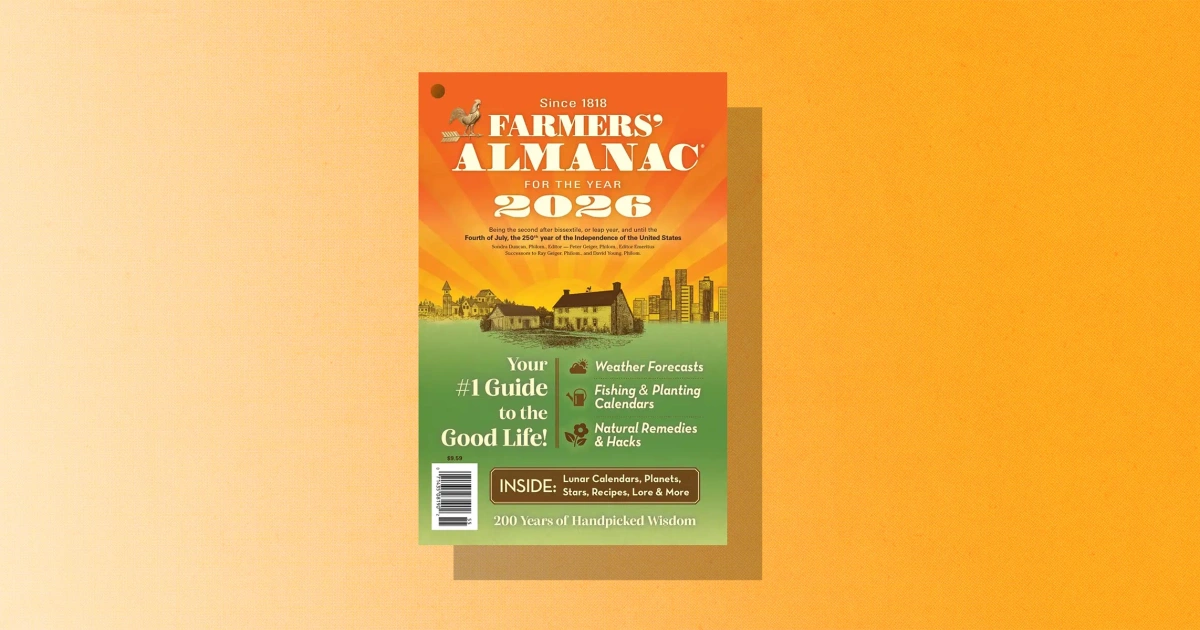Copyright NBC News

Readers have been upset to learn that the Farmers’ Almanac is ceasing publication after more than 200 years in existence. No, not that one. The Nov. 6 announcement by the staff at the Maine-based Farmers’ Almanac not only caused an outpouring of support for a publication that began in 1818, but also resulted in a competing farmer’s almanac putting out a statement that it is still very much in business. The Old Farmer’s Almanac, based in New Hampshire, issued a news release on Nov. 7 clearing up any confusion by noting that it is “still going strong.” Here’s what to know. Why Is the Farmers’ Almanac Shutting Down? The Farmers’ Almanac, based in Lewiston, Me., announced that it is ceasing publication due to the “growing financial challenges of producing and distributing the Almanac in today’s chaotic media environment,” the company said in a news release. Access to existing digital content on its website will be discontinued in December. “First we want to tell everyone that this decision was very hard to make,” Farmers’ Almanac editor Sandi Duncan told TODAY.com in an email. “The Almanac has been published each and every year since 1818 — even when the editor (Ray Geiger) was overseas serving in World War II. And we also recognize that it’s more than just a book — it’s a way of life — a tradition — a resource for so many people for so many years.” “However, readers now access information and answers differently, and the trajectory of newsstand sales made this decision necessary,” she continued. “The financial challenges of producing and distributing the Almanac in today’s chaotic media environment, unfortunately lead to this decision.” The 2026 Farmers’ Almanac will be the final edition of a publication that began in 1818. It features weather forecasts, astronomy tidbits and predictions like the best days to ski, brew beer, plant tomatoes and view meteor showers. Duncan, who has worked at the publication since 1994, spoke about what she hopes the legacy of the long-running publication will end up being. “To remind people to stop and smell the roses,” she said. “To appreciate all the wonders of nature, to realize that there is so much we can learn from the natural world even if we live among concrete skyscrapers.” The announcement left readers upset at the loss. “Sadly another treasured memory will disappear but will never be forgotten,” one person commented on the Farmers’ Almanac website. “Have read FA since I was a kid, now 70.” “No way! Please tell me it isn’t so,” another wrote. “I have had the FA in my home every year since I was 19 years old. I am now in my 70’s. The wit, wisdom, and weather have been like a wonderful old friend to me.” “Please don’t go. I’ve grown up with you and want to keep growing older together,” another commented. “Not ready for you to leave. Please reconsider.” What Is the Difference Between the Farmer’s Almanac And the Old Farmer’s Almanac? The Old Farmer’s Almanac is based in Dublin, N.H., and has been in existence since 1792. The Farmer’s Almanac is based in Lewiston, Me., and was in existence since 1818. The editors of the Old Farmer’s Almanac released a statement on Nov. 7 in case readers were confused thinking it was going out of business. “You may have heard that the Farmers’ Almanac, based out of Lewiston, ME, is ceasing publication after an incredible 200+ year run,” the statement reads. “Over the years, there has been some confusion between different almanacs, so to be clear: The OLD Farmer’s Almanac isn’t going anywhere. As we have since 1792, during George Washington’s presidency, we will continue to publish our annual edition, while educating and entertaining readers online at Almanac.com.” The 2026 Old Farmer’s Almanac will feature new gardening books, digital tools, calculators and seasonal weather forecasts. The book also includes gardening knowledge, astronomy and folklore material. “Rest assured, as sure as the Sun will rise, The Old Farmer’s Almanac — with our familiar yellow cover and 80% accurate weather forecasts — will be around for generations to come,” the statement concluded.



